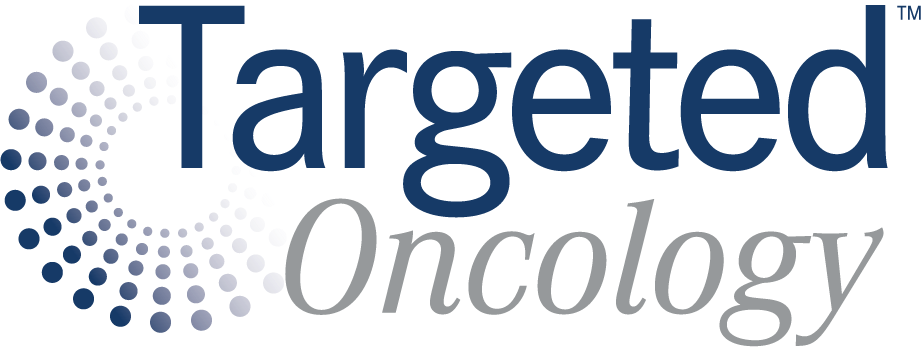1L Treatment for Advanced NSCLC
A panelist discusses how first-line (1L) therapies, including EGFR tyrosine kinase inhibitors (TKIs) such as osimertinib, are the standard of care for treating locally advanced or metastatic EGFR-mutated non–small cell lung cancer (NSCLC), with emerging combination strategies and safety considerations shaping current treatment approaches.
Summary for Physicians: 1L Therapies for LA/M EGFR-Mutated NSCLC
Overview of Standard of Care: For patients with locally advanced or metastatic (LA/M) EGFR-mutated NSCLC, targeted therapies have become the standard of care in the 1L setting. EGFRTKIs are the cornerstone of treatment for these patients due to their ability to effectively target and inhibit the EGFR pathway, which is frequently activated in this subset of NSCLC.
The 1L EGFR TKIs include:
- Osimertinib (a third-generation EGFR TKI) is currently considered the preferred 1L treatment. It is effective against both EGFR exon 19 deletions and L858R point mutations, as well as against T790M resistance mutations. Osimertinib also has the added benefit of being able to cross the blood-brain barrier, which is especially relevant in patients with central nervous system (CNS) metastases.
- Afatinib and erlotinib are also used as 1L treatments but are less commonly used now due to the superior efficacy of osimertinib, particularly for CNS control.
Combination Therapy Strategies: Recent advances have explored combiningEGFR TKIs with other therapies to enhance efficacy and combat resistance mechanisms:
- Combination with chemotherapy:
- Osimertinib + chemotherapy (platinum-based or pemetrexed): Studies have shown that combining osimertinib with chemotherapy improves progression-free survival (PFS) compared with osimertinib alone. This strategy is being explored particularly in patients with brain metastases or who are not ideal candidates for monotherapy.
- Combination with immunotherapy:
- Combining EGFR TKIs with immune checkpoint inhibitors (eg, pembrolizumab) is also under investigation. Early-phase studies have indicated potential benefits in patients with EGFR mutations, but the role of immunotherapy in this population remains uncertain and requires more clinical validation.
- Combination with other targeted therapies:
- Targeting MEK inhibitors, HER2 inhibitors, or other signaling pathways may provide additional benefits, especially in patients who develop resistance to EGFR TKIs.
Safety Considerations for 1L Treatment: When selecting 1L therapies forEGFR-mutated NSCLC, several safety considerations must be factored in:
- Pulmonary toxicity: Interstitial lung disease is a potential adverse effect of EGFR TKIs, particularly with drugs such as afatinib and erlotinib. Careful monitoring for respiratory symptoms is essential.
- Diarrhea and skin toxicity: Common adverse effects of EGFR TKIs, especially with drugs such as erlotinib and afatinib, can impact quality of life. Diarrhea, rash, and paronychia are typical and often manageable but require ongoing monitoring and supportive care.
- Cardiac effects: Osimertinib has been associated with QT interval prolongation, so regular electrocardiogram monitoring is recommended.
- CNS adverse effects: Although osimertinib has better CNS penetration, it can still lead to CNS-related toxicities such as headaches and visual disturbances, which should be monitored closely, especially in patients with existing CNS metastases.
- Drug interactions: EGFR TKIs, particularly erlotinib and afatinib, may interact with certain medications, so careful attention is needed for potential drug-drug interactions.
In conclusion, EGFR TKIs remain the cornerstone of 1L therapy for LA/M EGFR-mutated NSCLC, with osimertinib being the most widely preferred agent due to its superior efficacy and safety profile. Combination strategies, including chemotherapy and targeted therapy, are emerging to further improve patient outcomes, though safety concerns, including toxicity and drug interactions, must be closely monitored.





